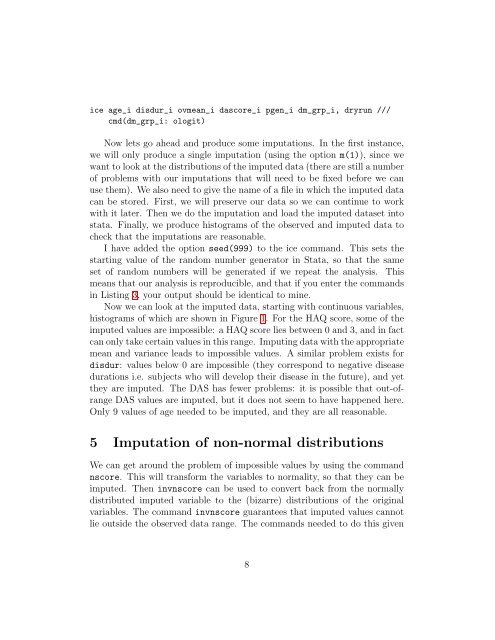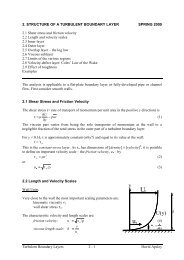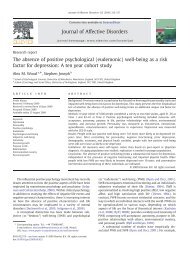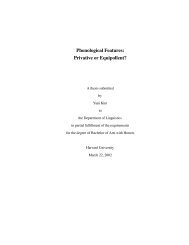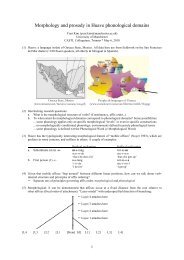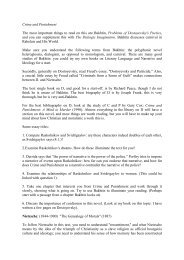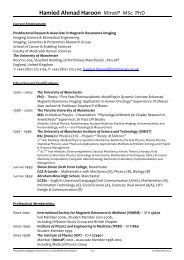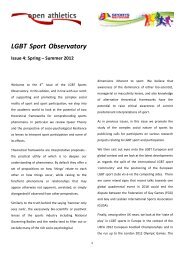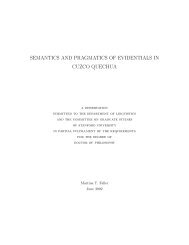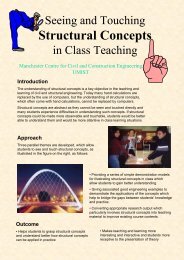A Guide to Imputing Missing Data with Stata Revision: 1.4
A Guide to Imputing Missing Data with Stata Revision: 1.4
A Guide to Imputing Missing Data with Stata Revision: 1.4
You also want an ePaper? Increase the reach of your titles
YUMPU automatically turns print PDFs into web optimized ePapers that Google loves.
ice age_i disdur_i ovmean_i dascore_i pgen_i dm_grp_i, dryrun ///<br />
cmd(dm_grp_i: ologit)<br />
Now lets go ahead and produce some imputations. In the first instance,<br />
we will only produce a single imputation (using the option m(1)), since we<br />
want <strong>to</strong> look at the distributions of the imputed data (there are still a number<br />
of problems <strong>with</strong> our imputations that will need <strong>to</strong> be fixed before we can<br />
use them). We also need <strong>to</strong> give the name of a file in which the imputed data<br />
can be s<strong>to</strong>red. First, we will preserve our data so we can continue <strong>to</strong> work<br />
<strong>with</strong> it later. Then we do the imputation and load the imputed dataset in<strong>to</strong><br />
stata. Finally, we produce his<strong>to</strong>grams of the observed and imputed data <strong>to</strong><br />
check that the imputations are reasonable.<br />
I have added the option seed(999) <strong>to</strong> the ice command. This sets the<br />
starting value of the random number genera<strong>to</strong>r in <strong>Stata</strong>, so that the same<br />
set of random numbers will be generated if we repeat the analysis. This<br />
means that our analysis is reproducible, and that if you enter the commands<br />
in Listing 3, your output should be identical <strong>to</strong> mine.<br />
Now we can look at the imputed data, starting <strong>with</strong> continuous variables,<br />
his<strong>to</strong>grams of which are shown in Figure 1. For the HAQ score, some of the<br />
imputed values are impossible: a HAQ score lies between 0 and 3, and in fact<br />
can only take certain values in this range. <strong>Imputing</strong> data <strong>with</strong> the appropriate<br />
mean and variance leads <strong>to</strong> impossible values. A similar problem exists for<br />
disdur: values below 0 are impossible (they correspond <strong>to</strong> negative disease<br />
durations i.e. subjects who will develop their disease in the future), and yet<br />
they are imputed. The DAS has fewer problems: it is possible that out-ofrange<br />
DAS values are imputed, but it does not seem <strong>to</strong> have happened here.<br />
Only 9 values of age needed <strong>to</strong> be imputed, and they are all reasonable.<br />
5 Imputation of non-normal distributions<br />
We can get around the problem of impossible values by using the command<br />
nscore. This will transform the variables <strong>to</strong> normality, so that they can be<br />
imputed. Then invnscore can be used <strong>to</strong> convert back from the normally<br />
distributed imputed variable <strong>to</strong> the (bizarre) distributions of the original<br />
variables. The command invnscore guarantees that imputed values cannot<br />
lie outside the observed data range. The commands needed <strong>to</strong> do this given<br />
8


